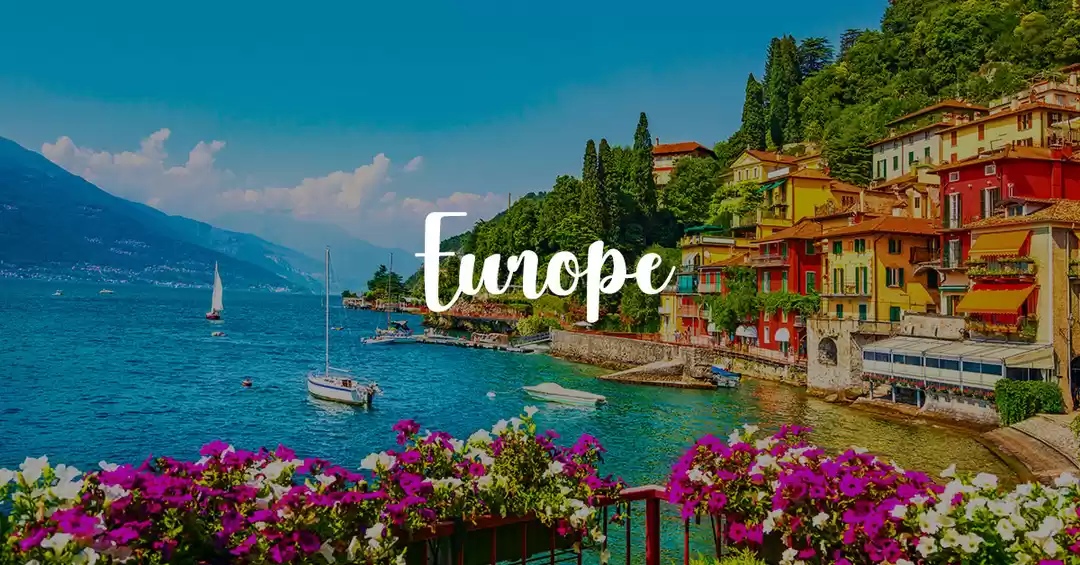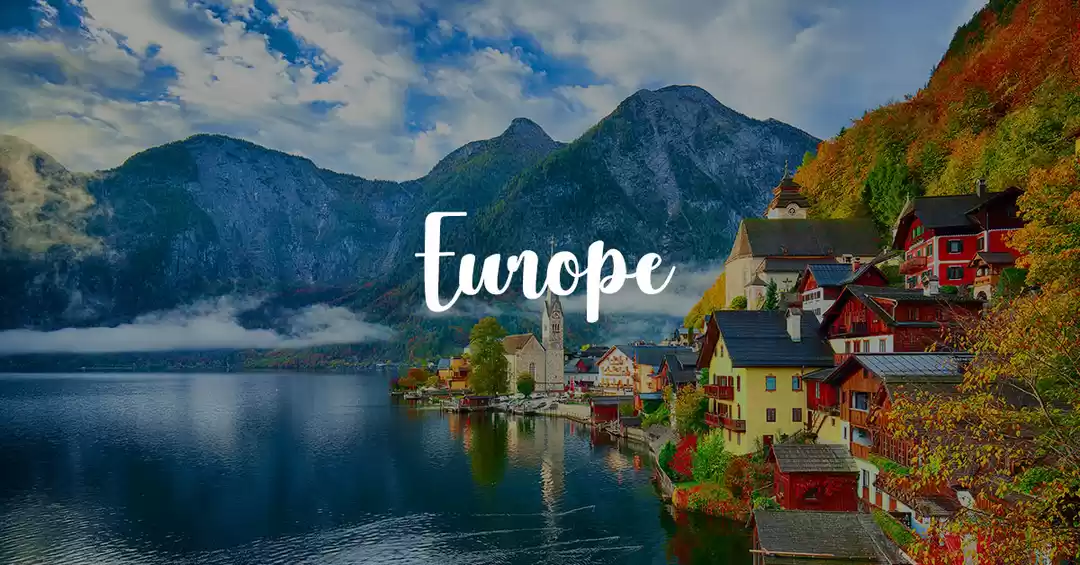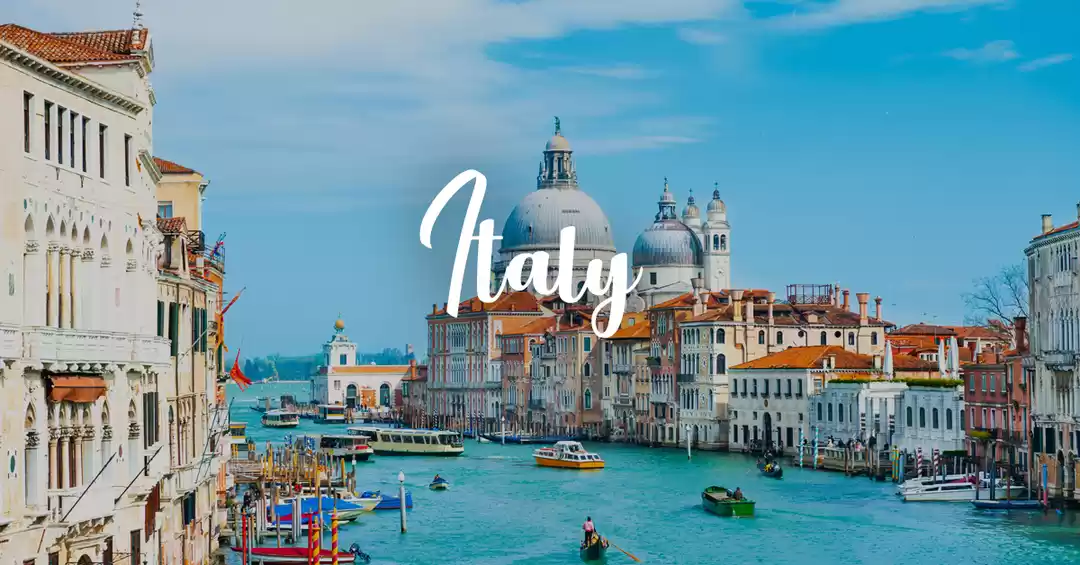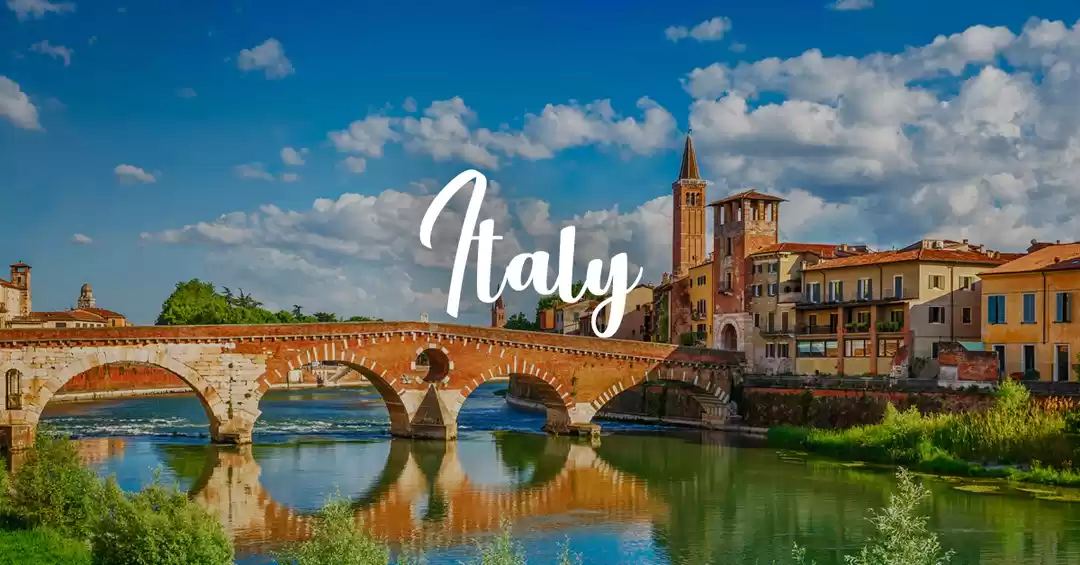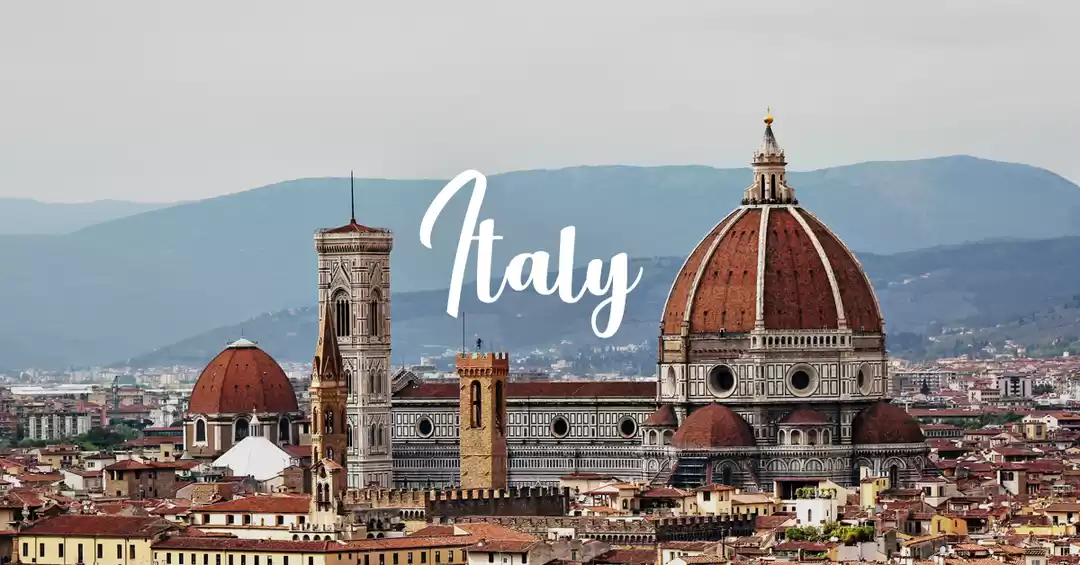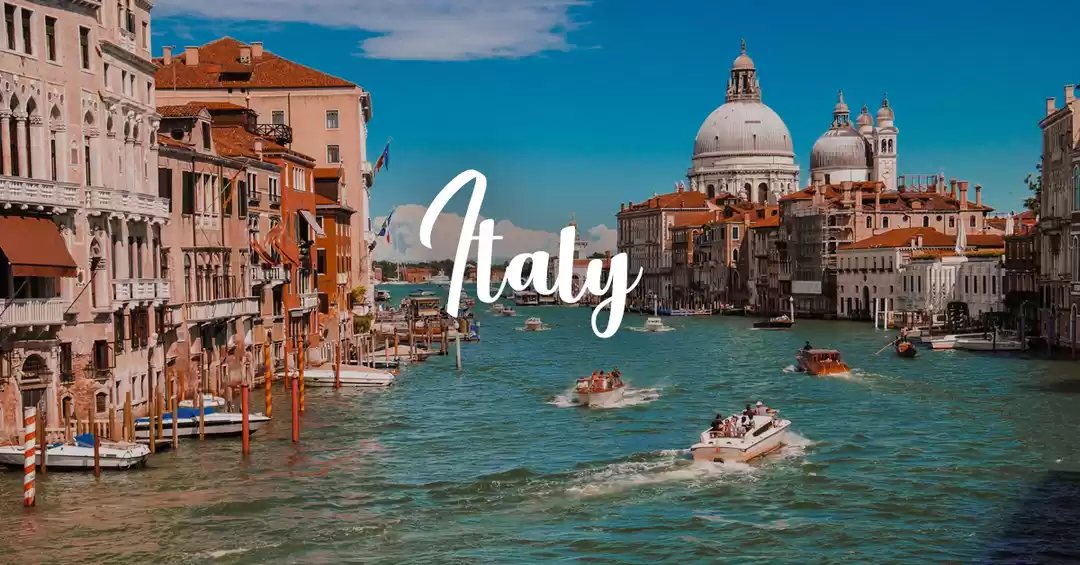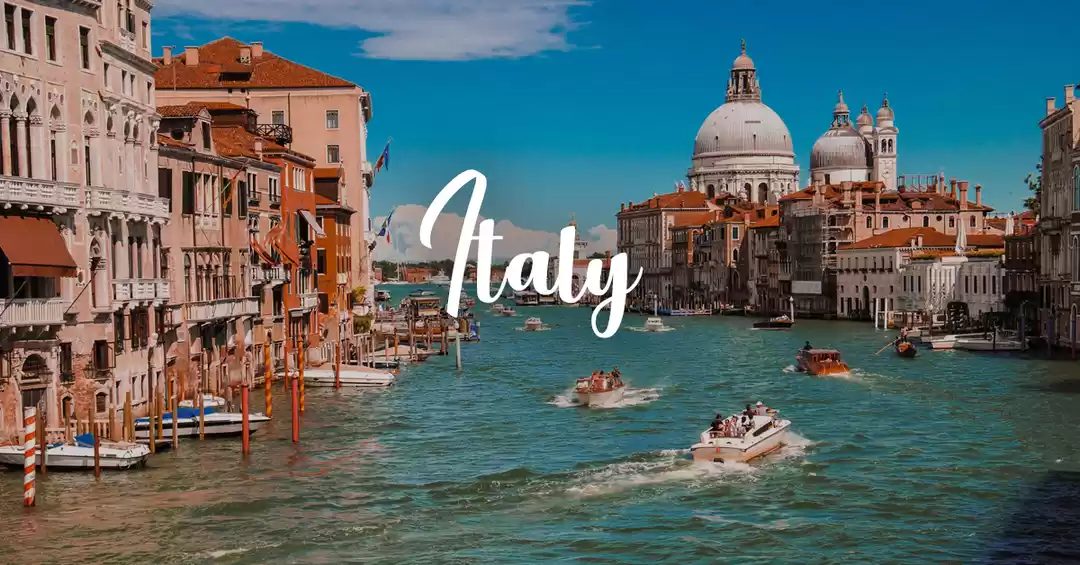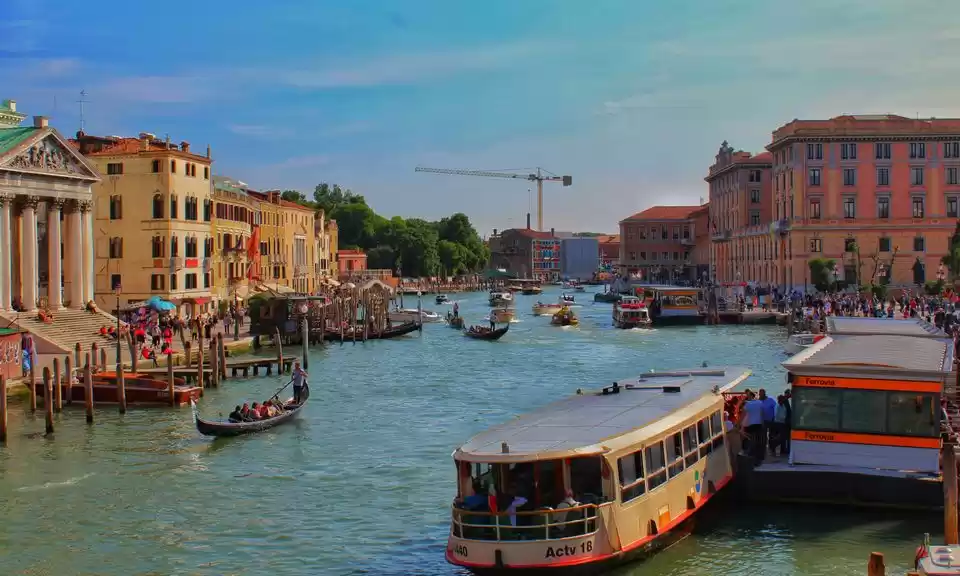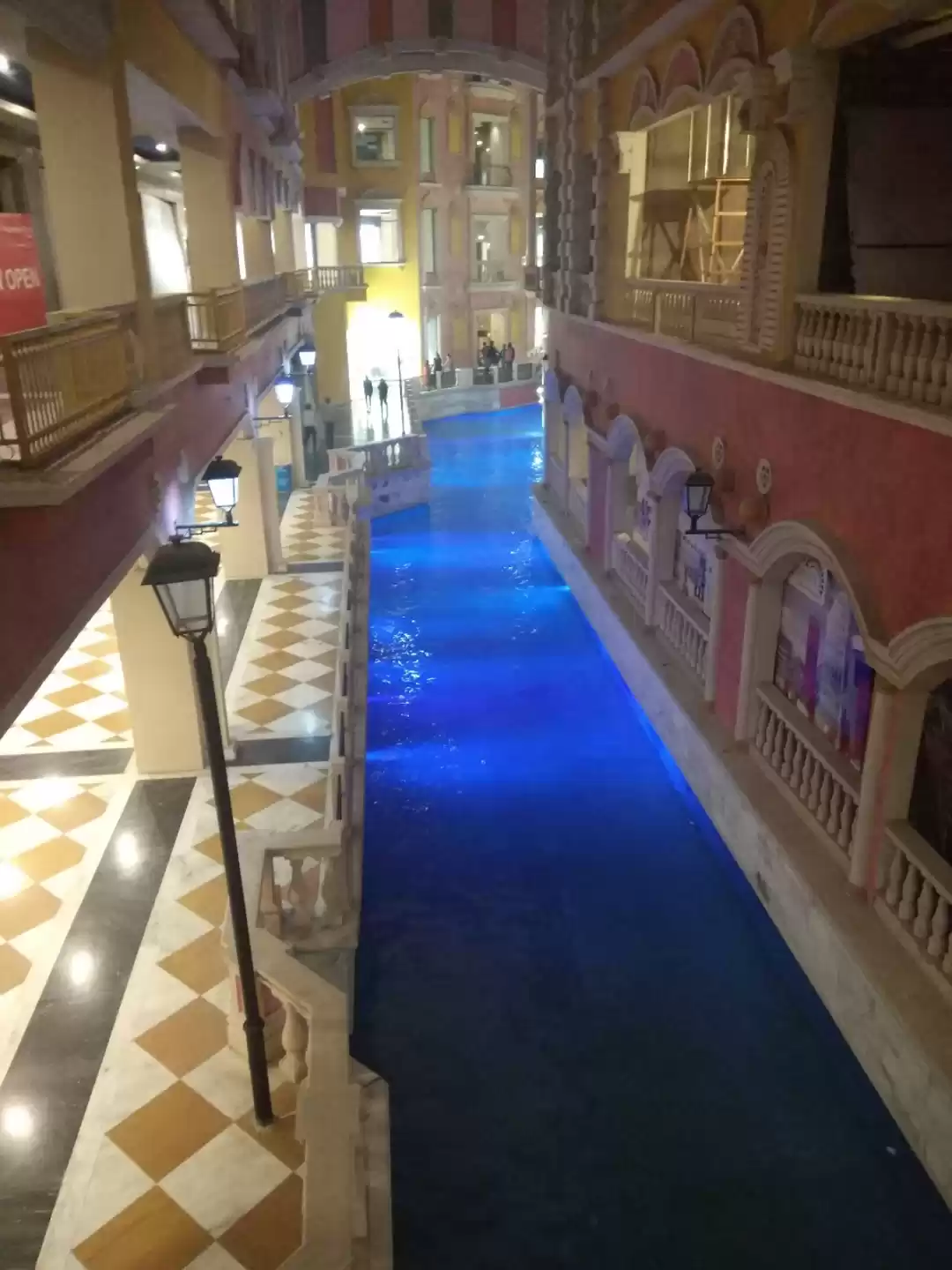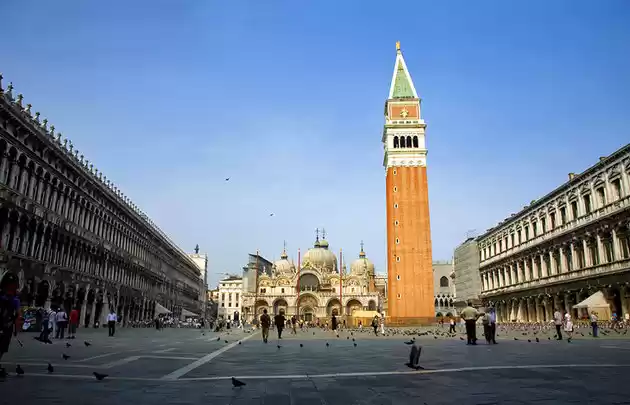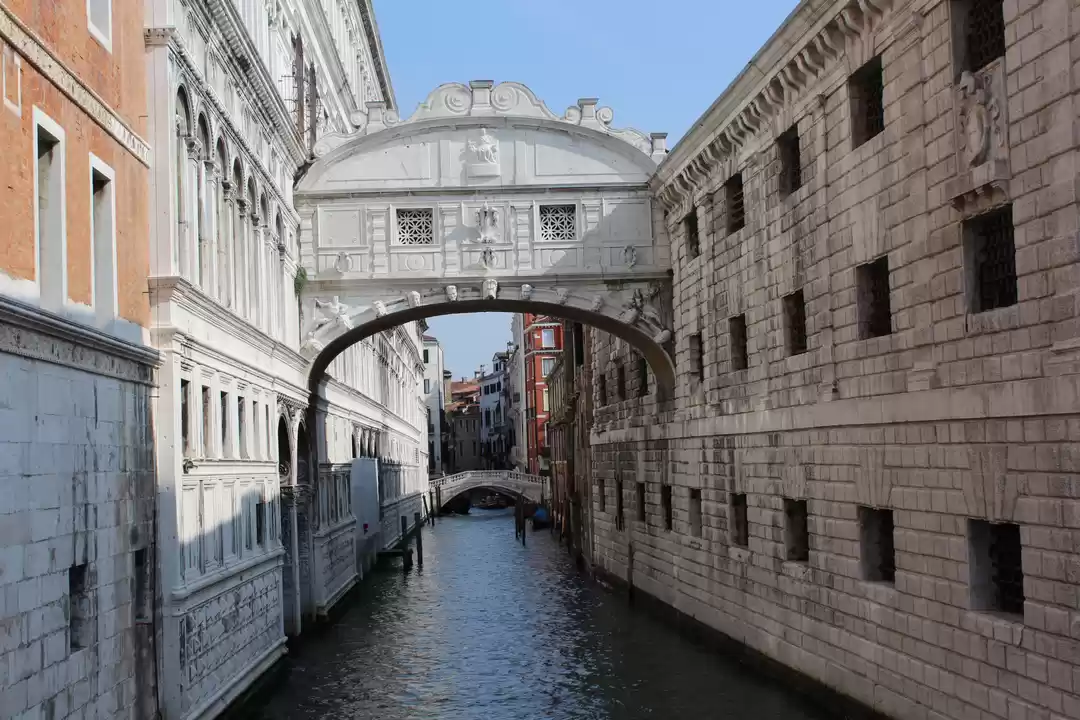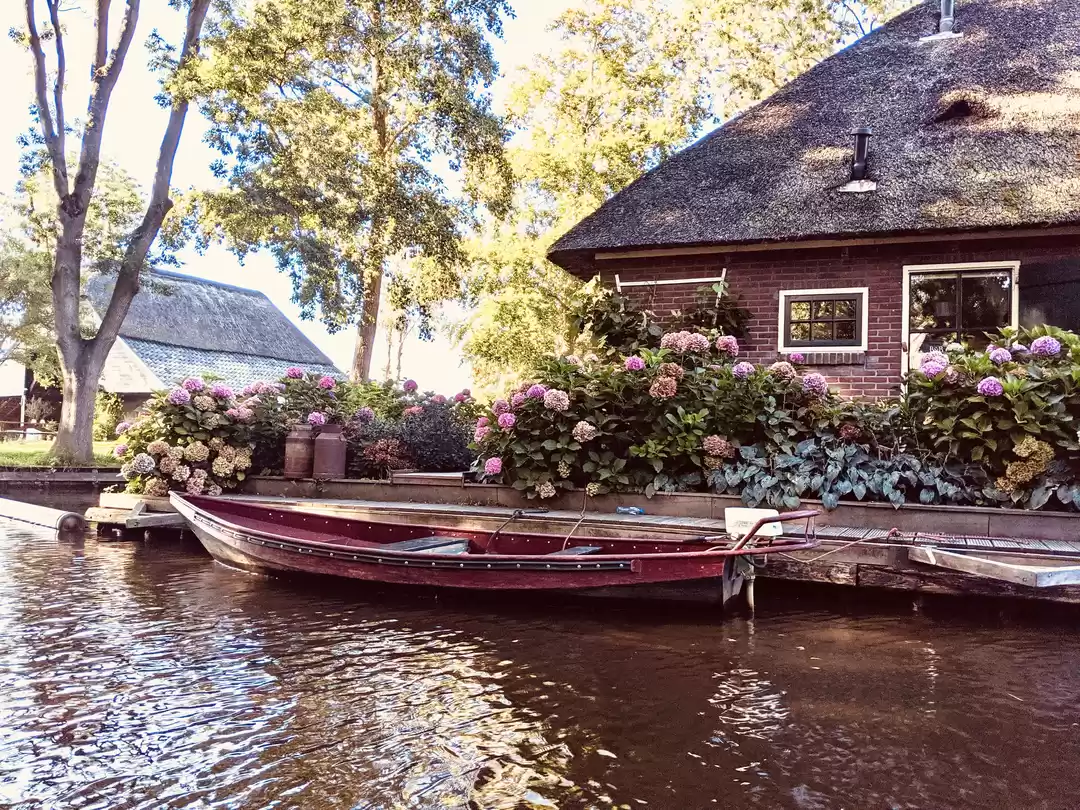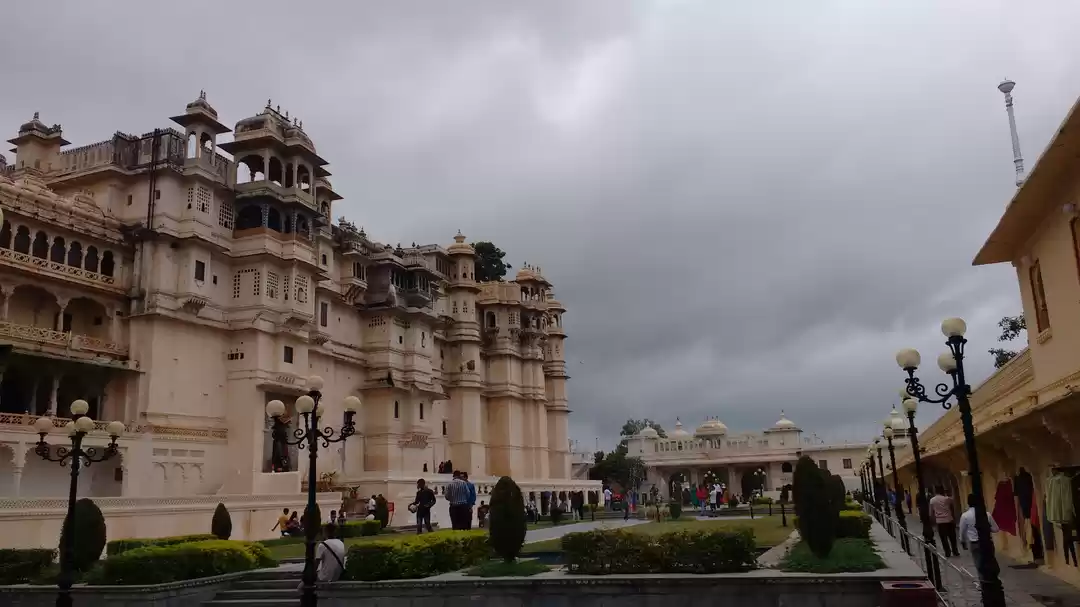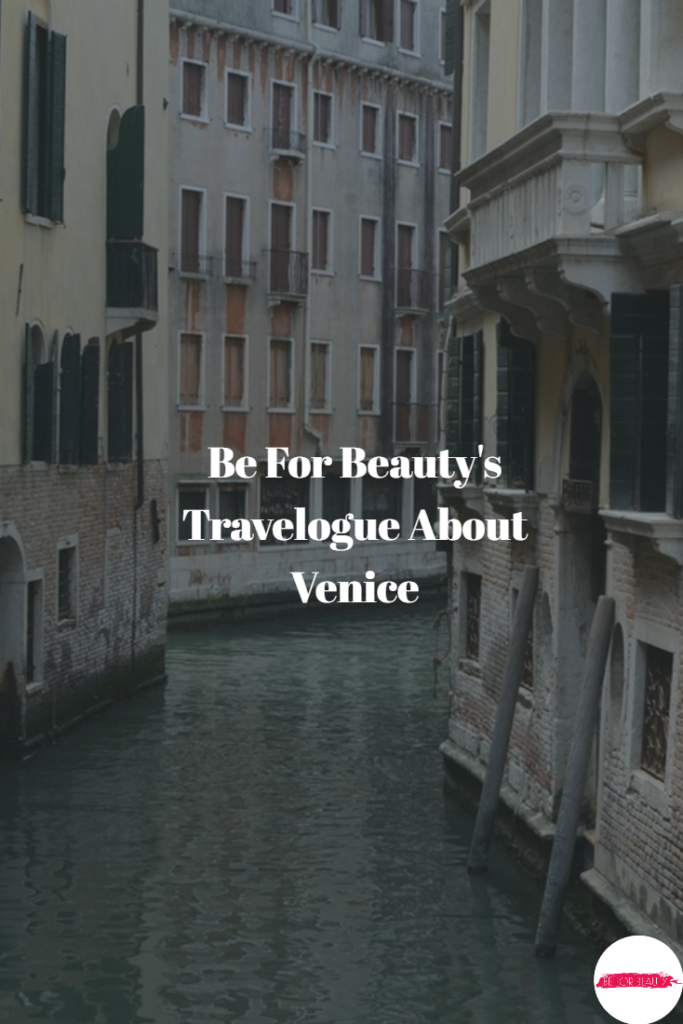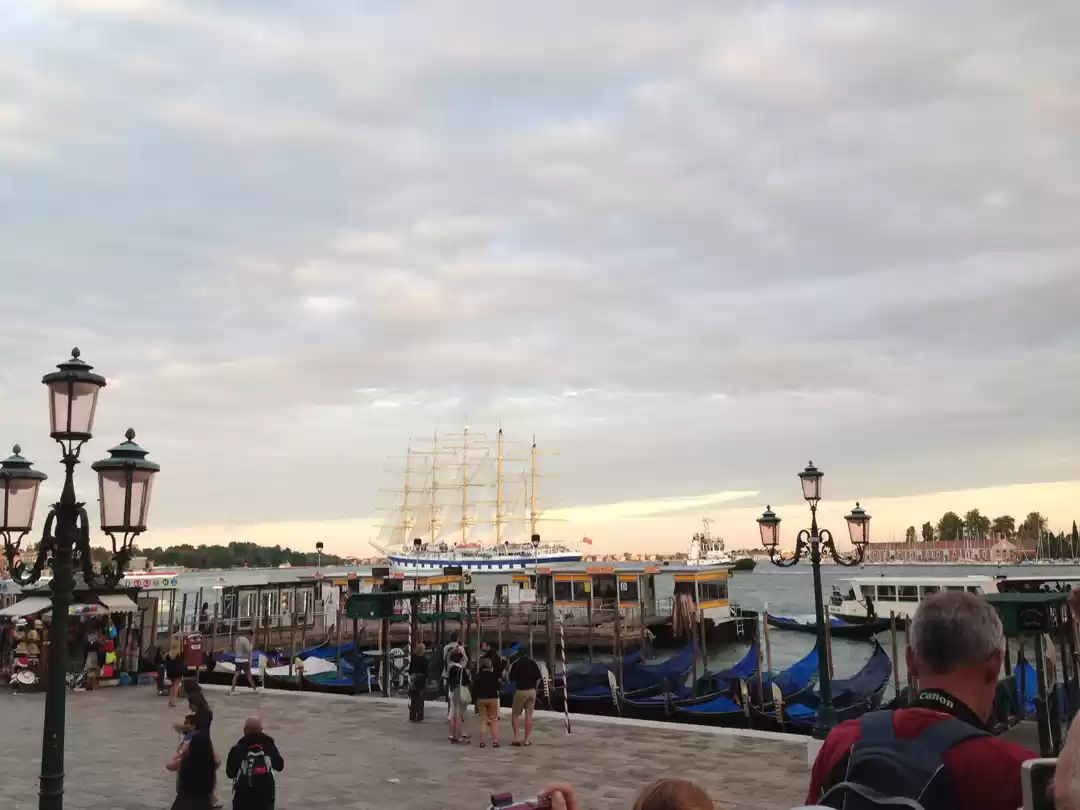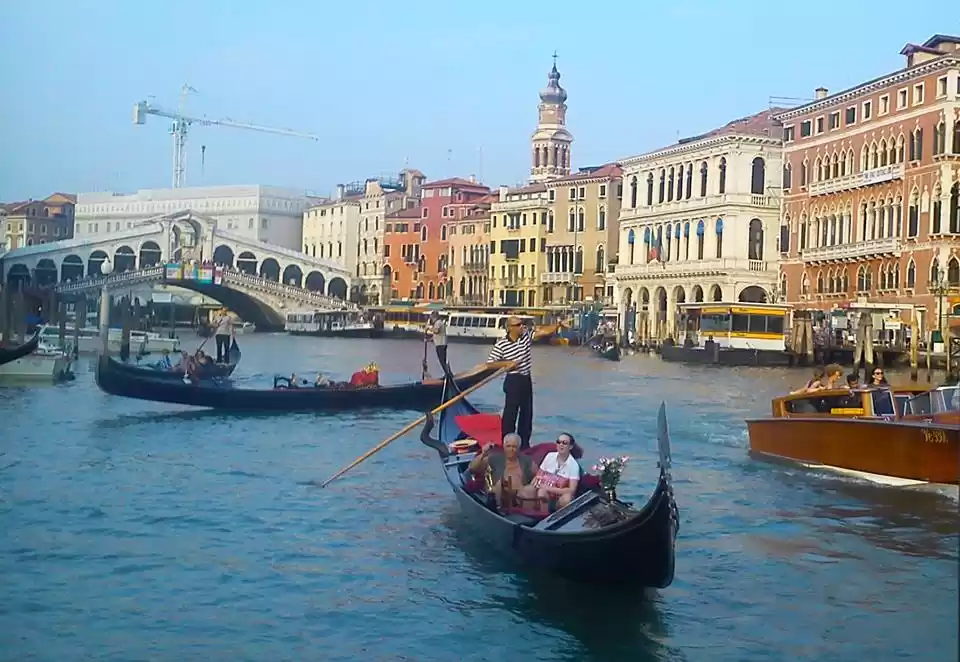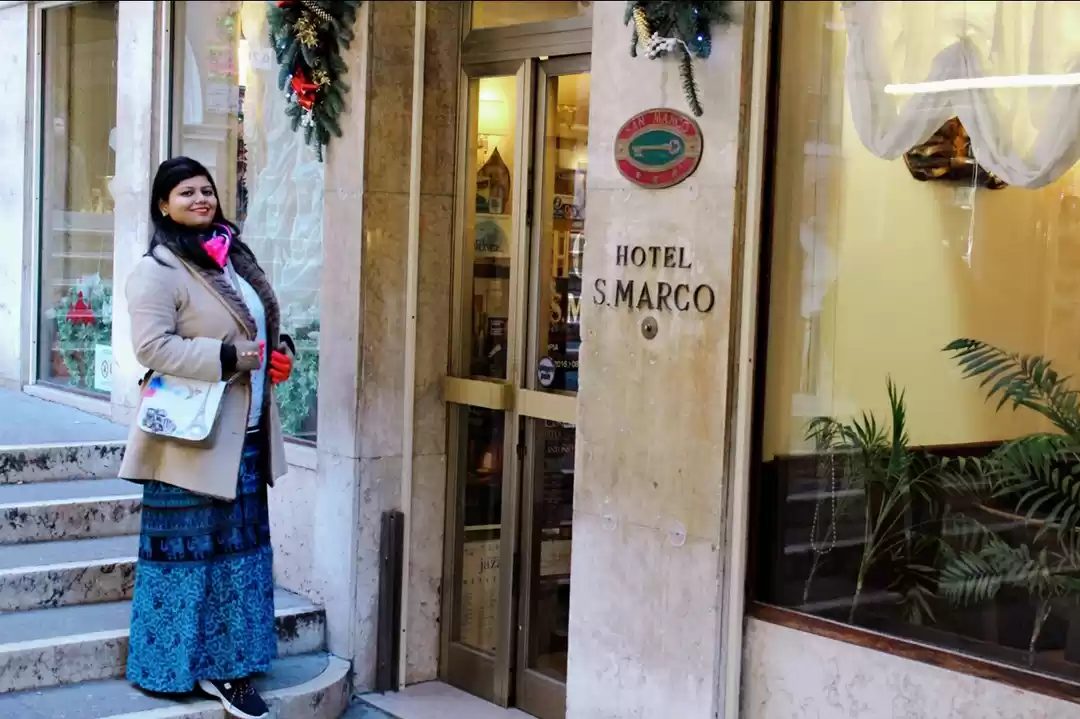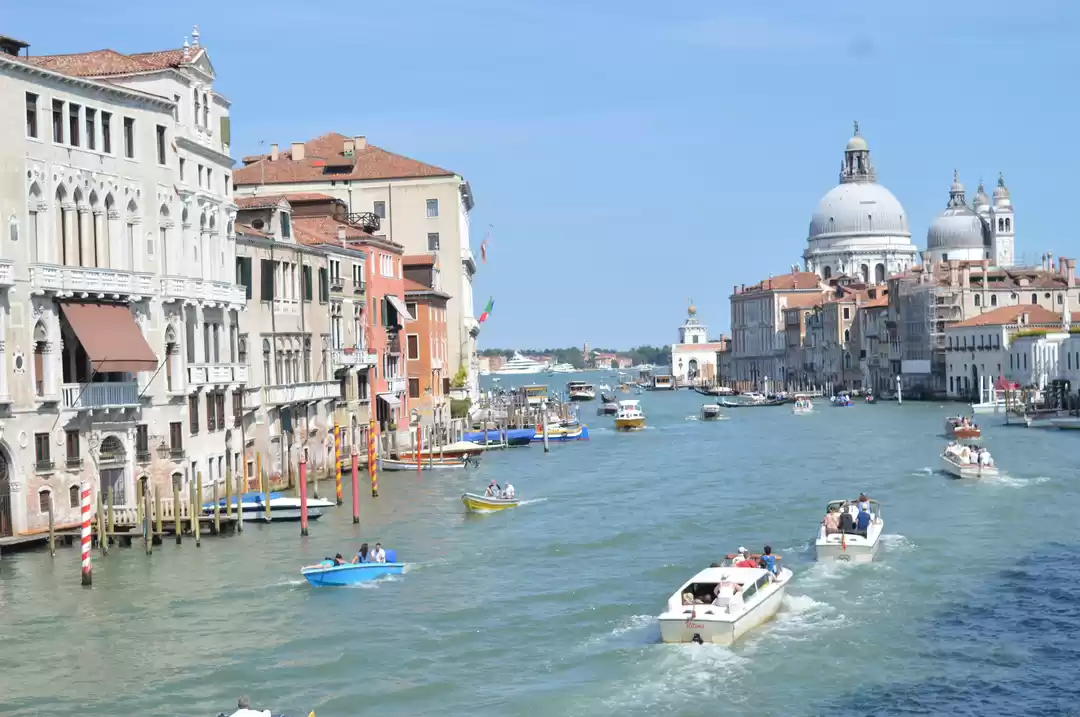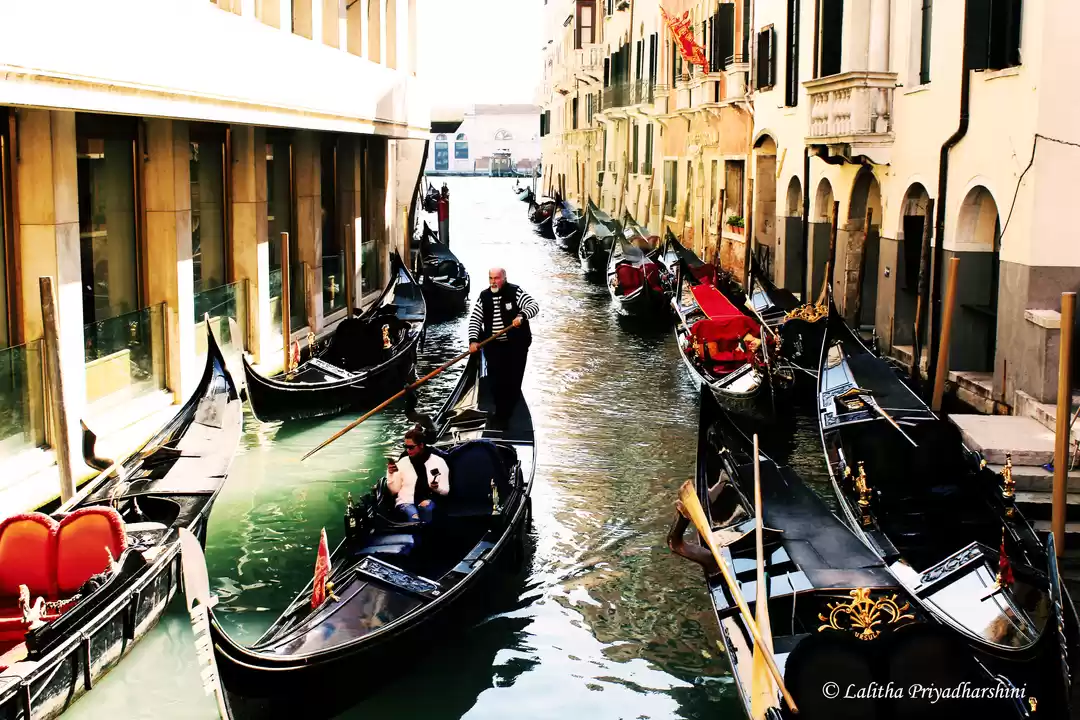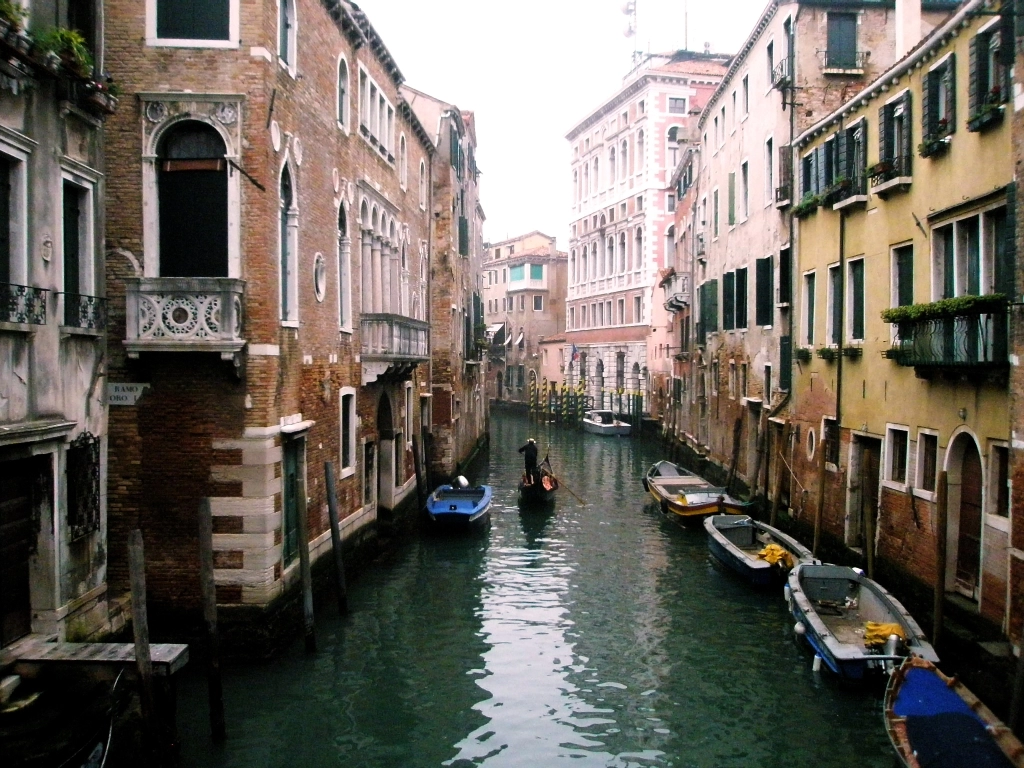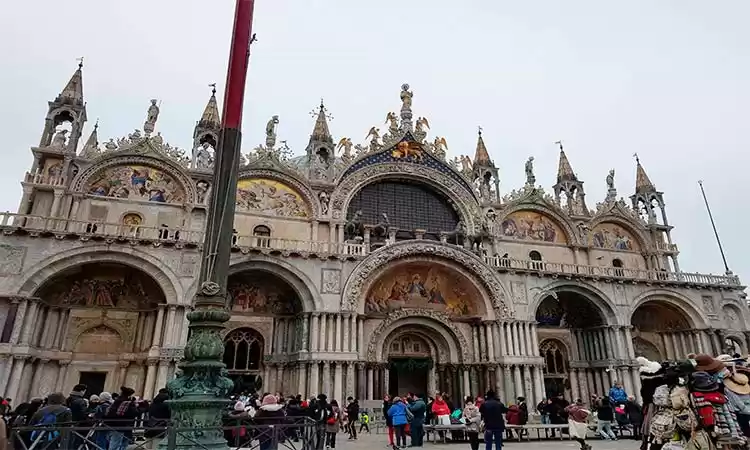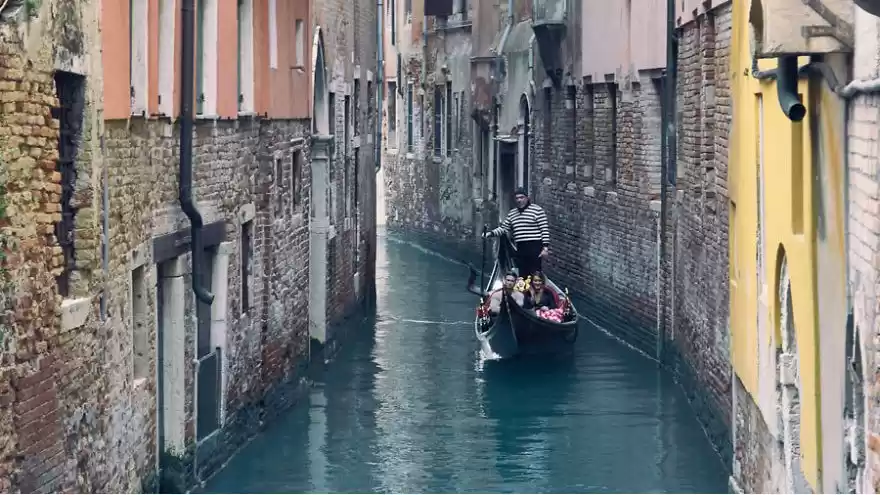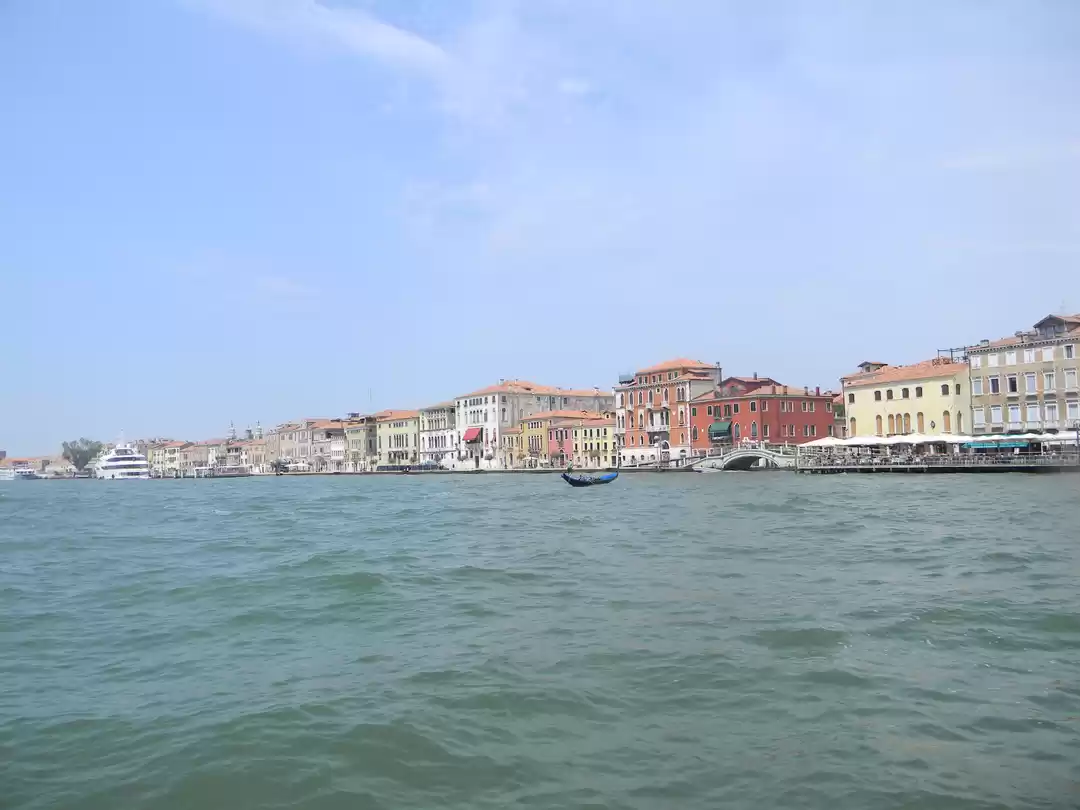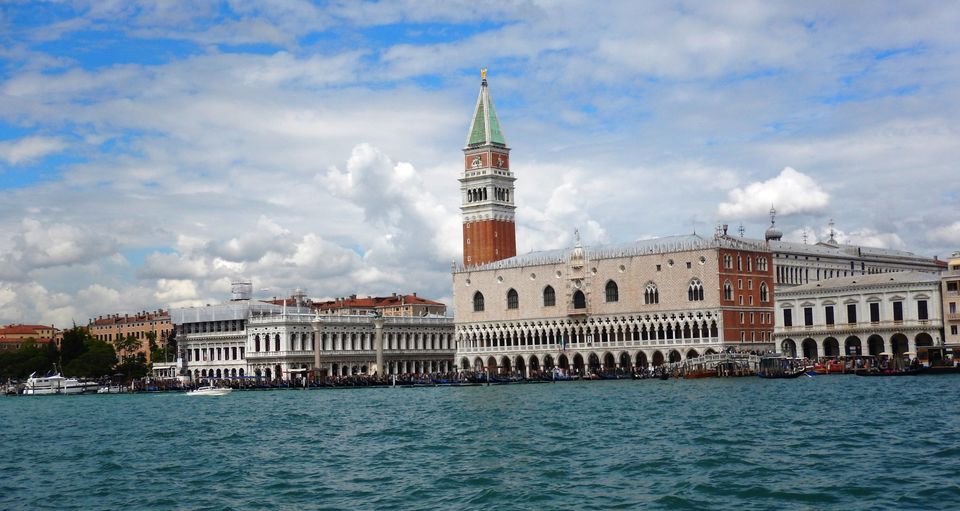
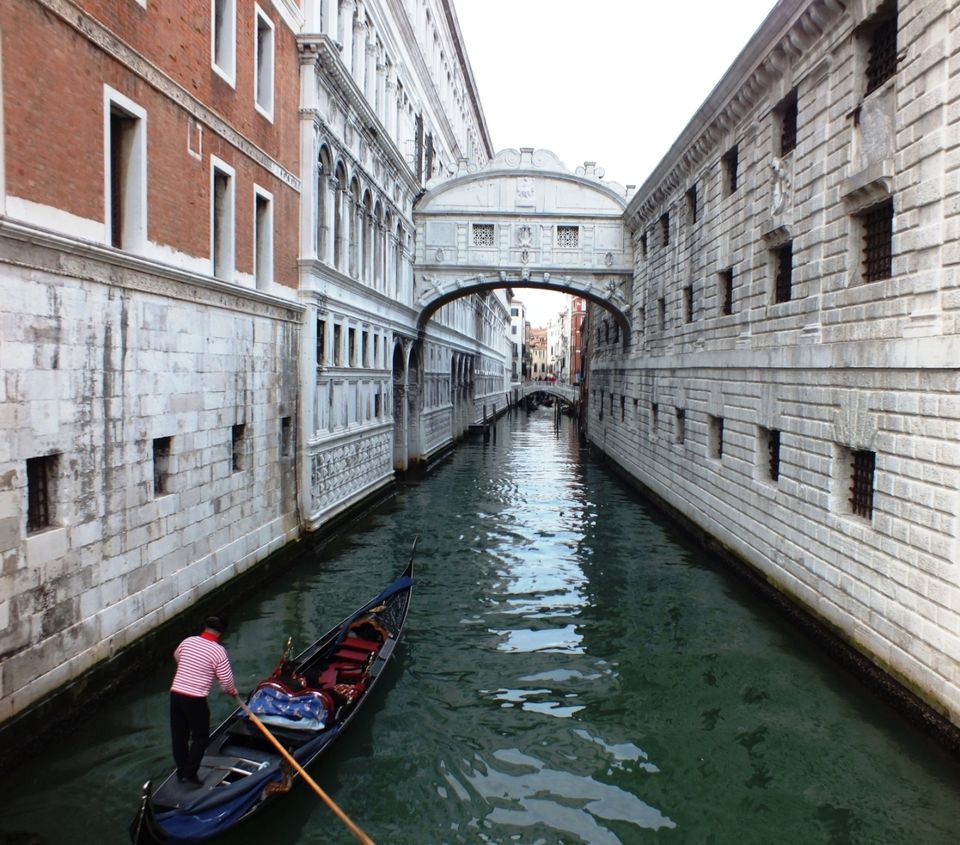
A twenty first century fashion capital without cars, buses or trucks! Yes, it exists! Venice in northeastern Italy is really too good to be true. Known as 'Queen of the Adriatic', Venice is a romantic haven where the canals are the roads and the gondolas are the cars. 118 islets, 177 canals and 409 bridges! A serpentine Grand Canal. The famed Rialto Bridge. Brick and stone buildings standing for centuries on submerged wooden piles and limestone plates. The acqua alta, a seasonal high-water phenomenon, enhancing the belief that Venice is sinking and may disappear altogether like the legendary island of Atlantis.
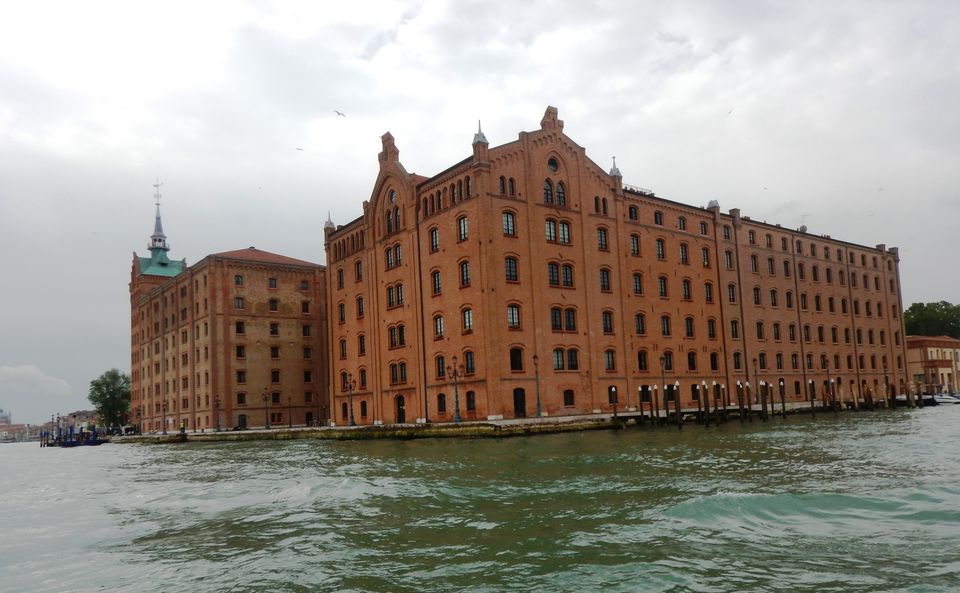
The city is believed to have been founded in the 5th century when Attila the Hun invaded this part of Italy prompting the inhabitants of the mainland to flee to the islets in the lagoon. By the 8th century, Venice was a Byzantine outpost. It successfully resisted a prolonged siege by Roman emperor Charlemagne in 814. Relics of St. Mark the apostle, brought from Egypt in 828, greatly enhanced the reputation of Venice as a place of pilgrimage. This city-state was successfully ruled by Grand Dukes (Doges) for 1100 years.
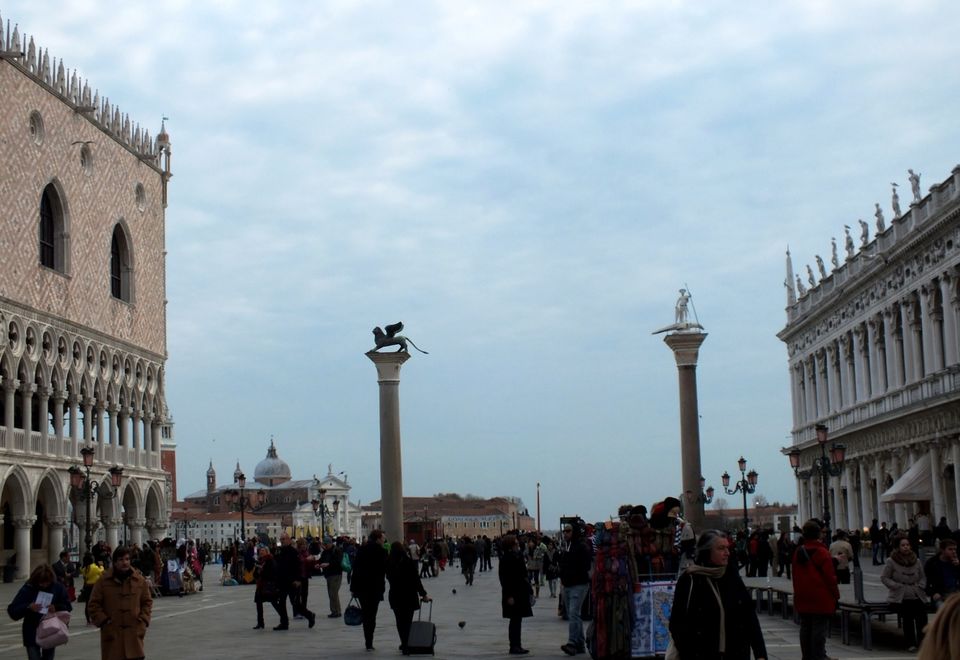
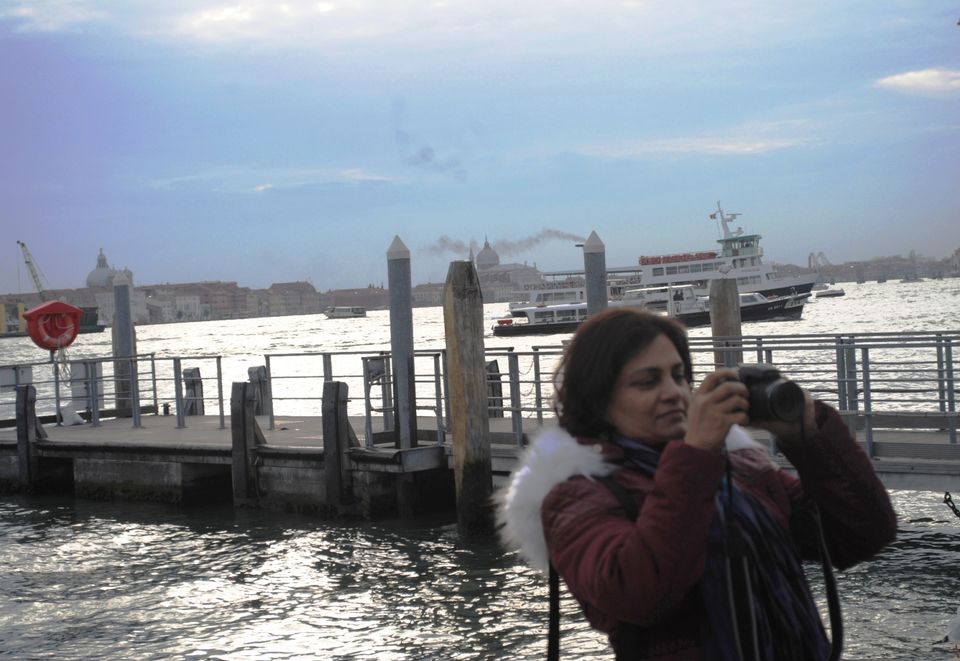
A great maritime power with a flourishing trade in silk, and spices, Venice at the turn of the first millennium was one of Europe’s wealthiest cities. In 1204 when the Crusaders sacked Constantinople, the booty brought to Venice included four bronze horses from the Hippodrome. Probably cast in the 4th century B.C. by Lysippos, the personal sculptor of Alexander the Great, the ‘triumphal quadriga’ now adorns the resplendent interior of St. Mark’s Basilica. With its Byzantine domes, gold leaf mosaics and pillaged treasures, St. Mark’s is a rare medieval masterpiece.
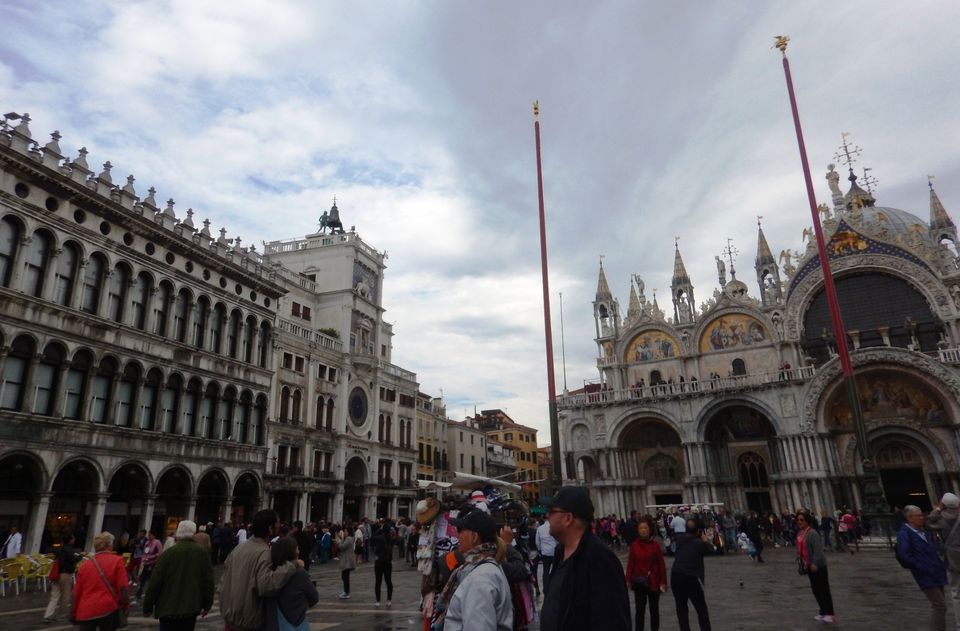
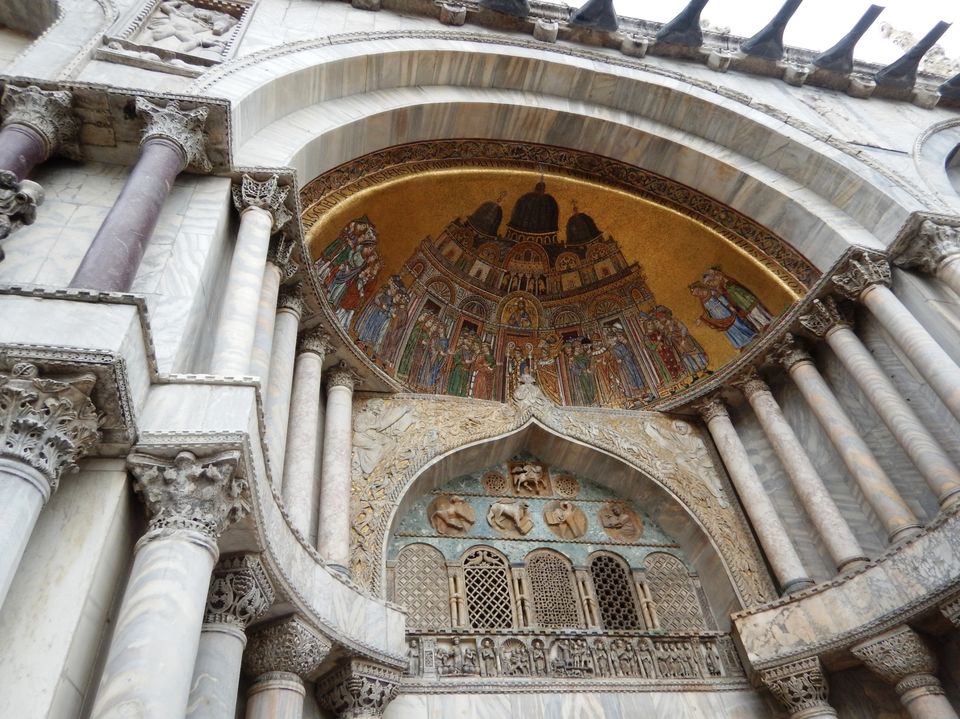
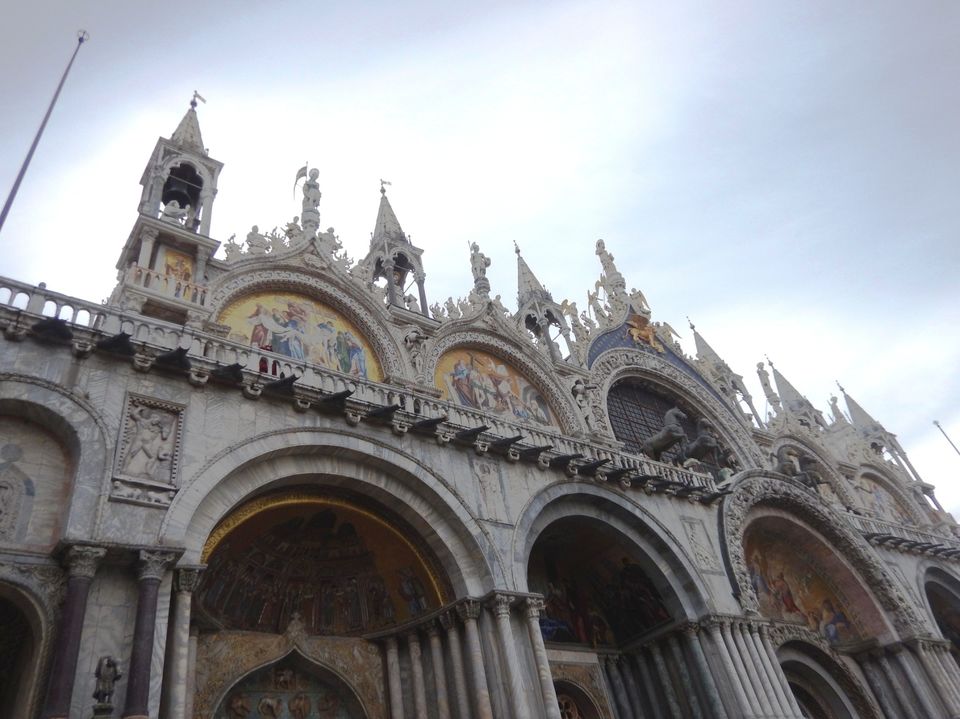
The Piazza San Marco or St. Mark’s Square is perhaps the most photographed square in the world. Palazzo Ducale (Doge’s Palace) has a magnificent Senate Hall, a golden staircase and a torture chamber. The world’s biggest oil painting ‘Paradise’ is among the priceless exhibits. The Bridge of Sighs links the palace to the dreaded prison where the condemned were led to their execution.
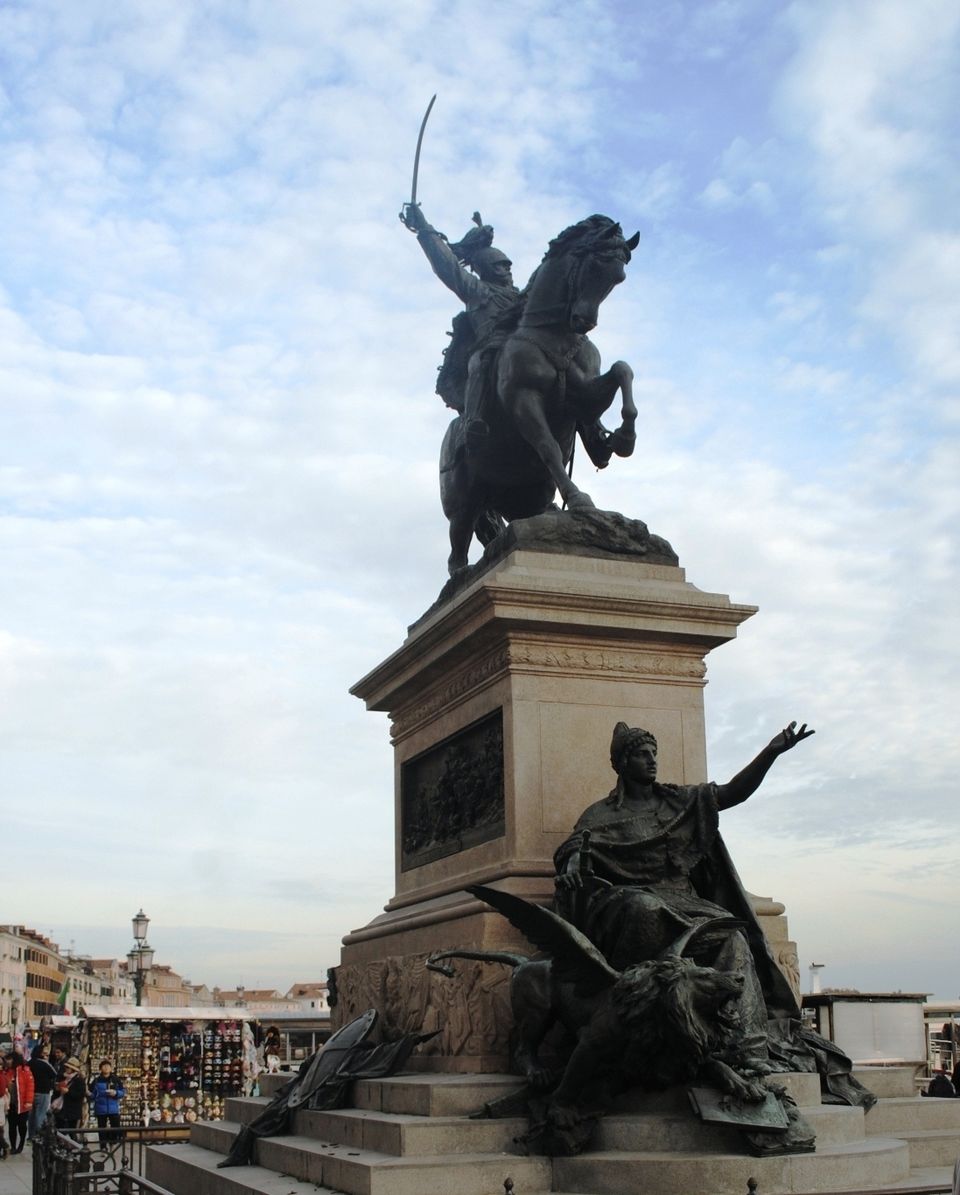
The Black Death of 1348 and recurring plagues over the next few centuries saw Venice losing huge chunks of its population. When the first printing press appeared in Germany in the 15th century, Venice quickly adopted the new technology, blossoming into a centre of learning, arts and music. However, when Christopher Columbus and Vasco da Gama ushered in new vistas of trade, Spain and Portugal prospered and the fortunes of Venice nosedived. Sacked by Napoleon in 1797, ‘Venezia’ became part of Italy in 1866.
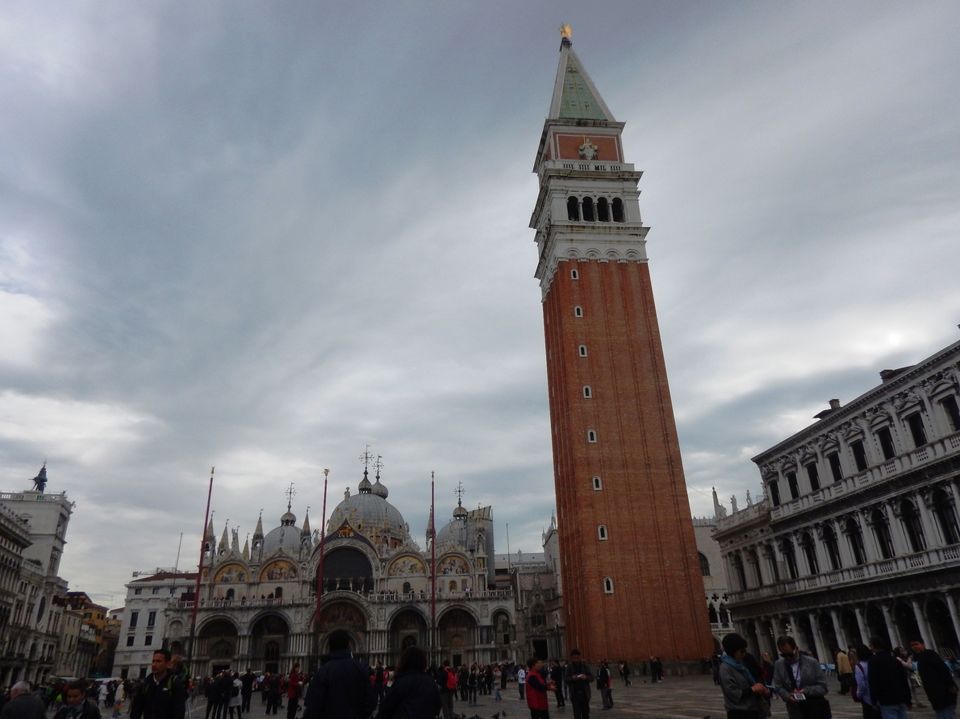
Today this pulsating city of masked carnivals, winged lions, Murano glass and exquisite Burano lace has only about 60,000 inhabitants. Many of the younger residents prefer to live on the mainland or in the bustling cities of Rome and Milan. The days of grandeur are long past and whispers of decline and decadence are distinctly audible.
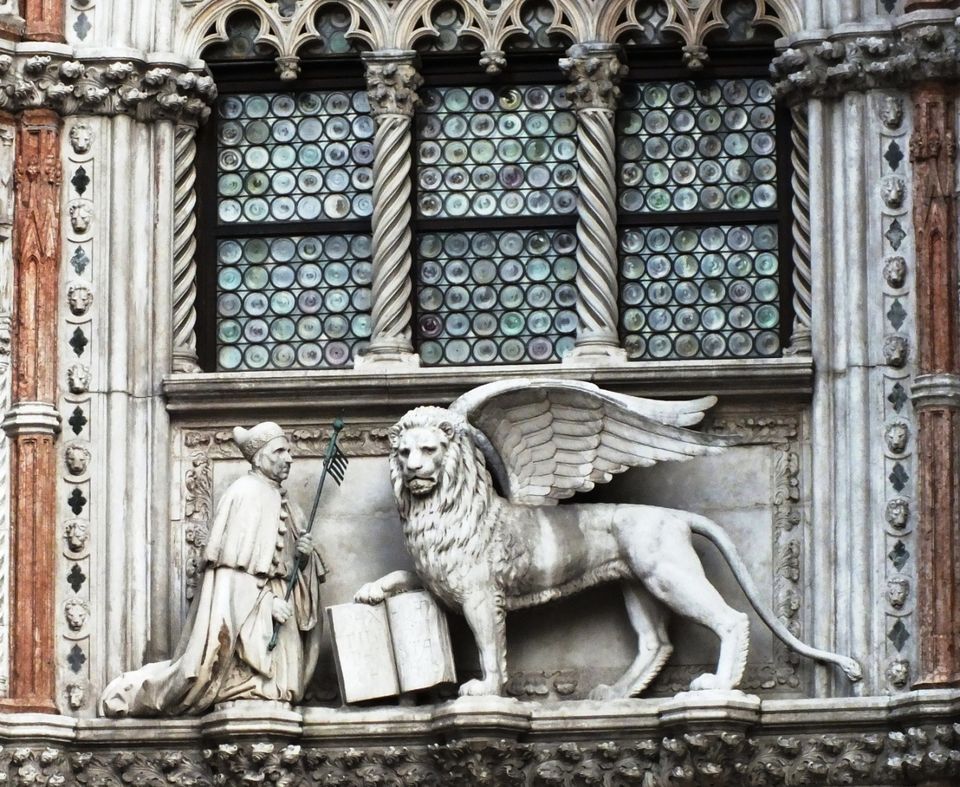
Marco Polo International Airport commemorates the 13th century traveller who ventured to the Far East. Venice was the birthplace of Casanova, the incorrigible womanizer. The Shakespearean character Shylock, the moneylender, was a Venetian Jew.
Many cruise liners depart from Venice to take eager voyagers to various Mediterranean ports in Greece, Turkey, Spain, Morocco, Egypt and Tunisia. The Venice Biennale, an art extravaganza began in 1893. In 1932 Lido Island hosted the world’s first film festival.
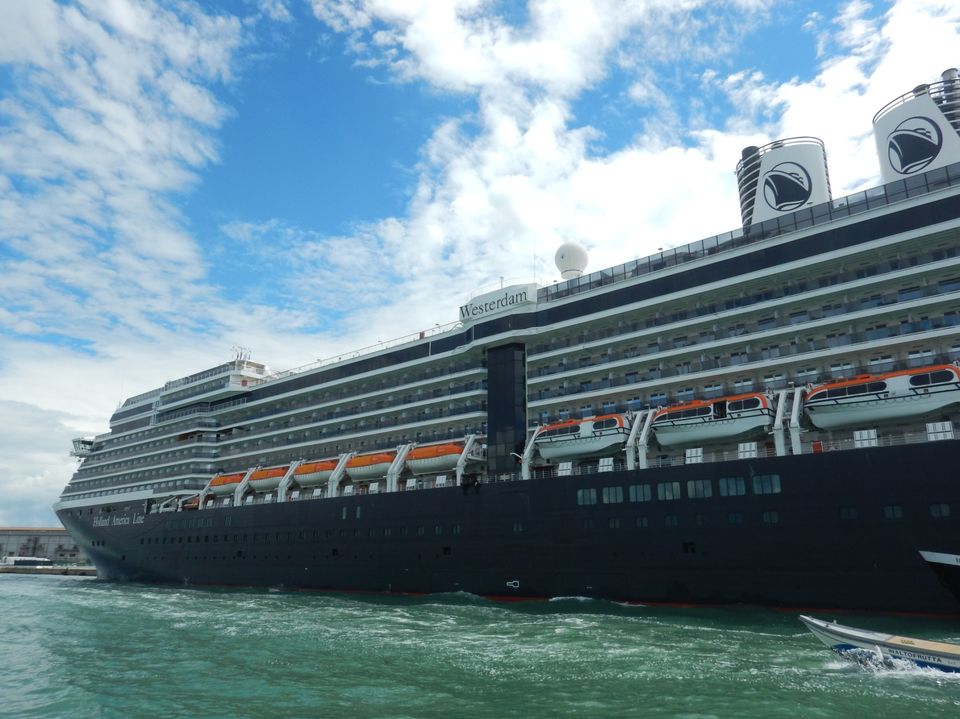
Venice is undoubtedly a shopper’s delight, a paradise for honeymooners, and an absolute treat for connoisseurs of sea food specialties, not to mention tipplers and swinging singles. Little wonder that the sinking queen attracts hordes of celebrities and 20 million tourists annually!
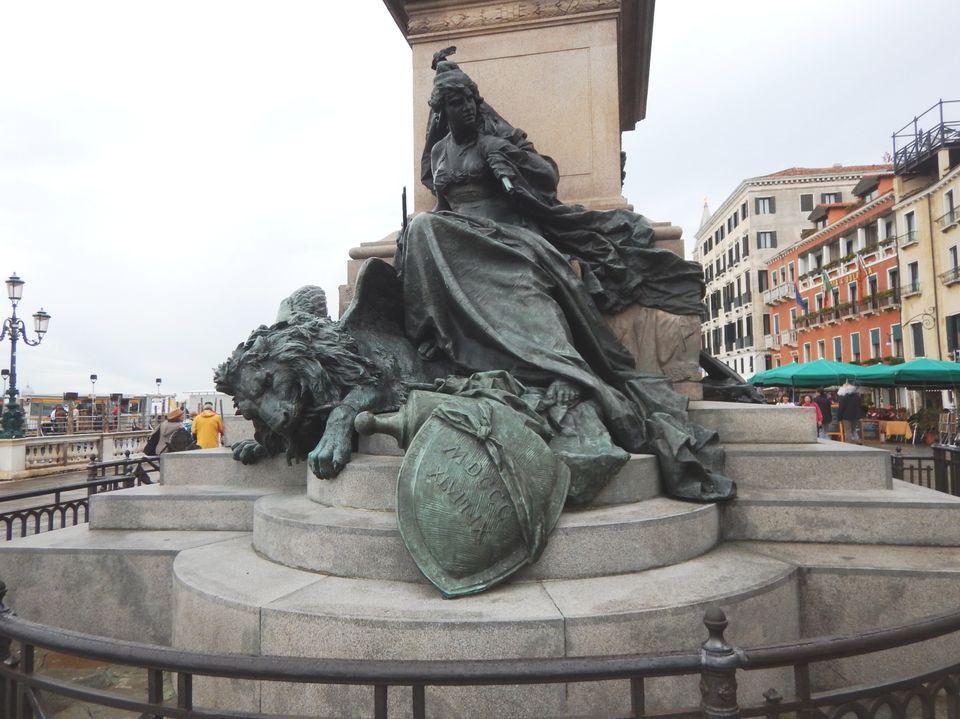
Tailpiece: After much haggling (and insistently declaring that I earn Indian rupees and not euros) I bought a sleazy looking Venetian mask from a Bangladeshi street vendor. When I stated my nationality he asked “You are Brahmin?” I said no. “Kayasth?” he persisted. I was beginning to feel uncomfortable, not used to begin asked the caste question. When I raised a quizzical eyebrow, the man hastily clarified, “I’m sure you’re from a good aristocratic family. Most Indian visitors don’t respect us like you do.”



